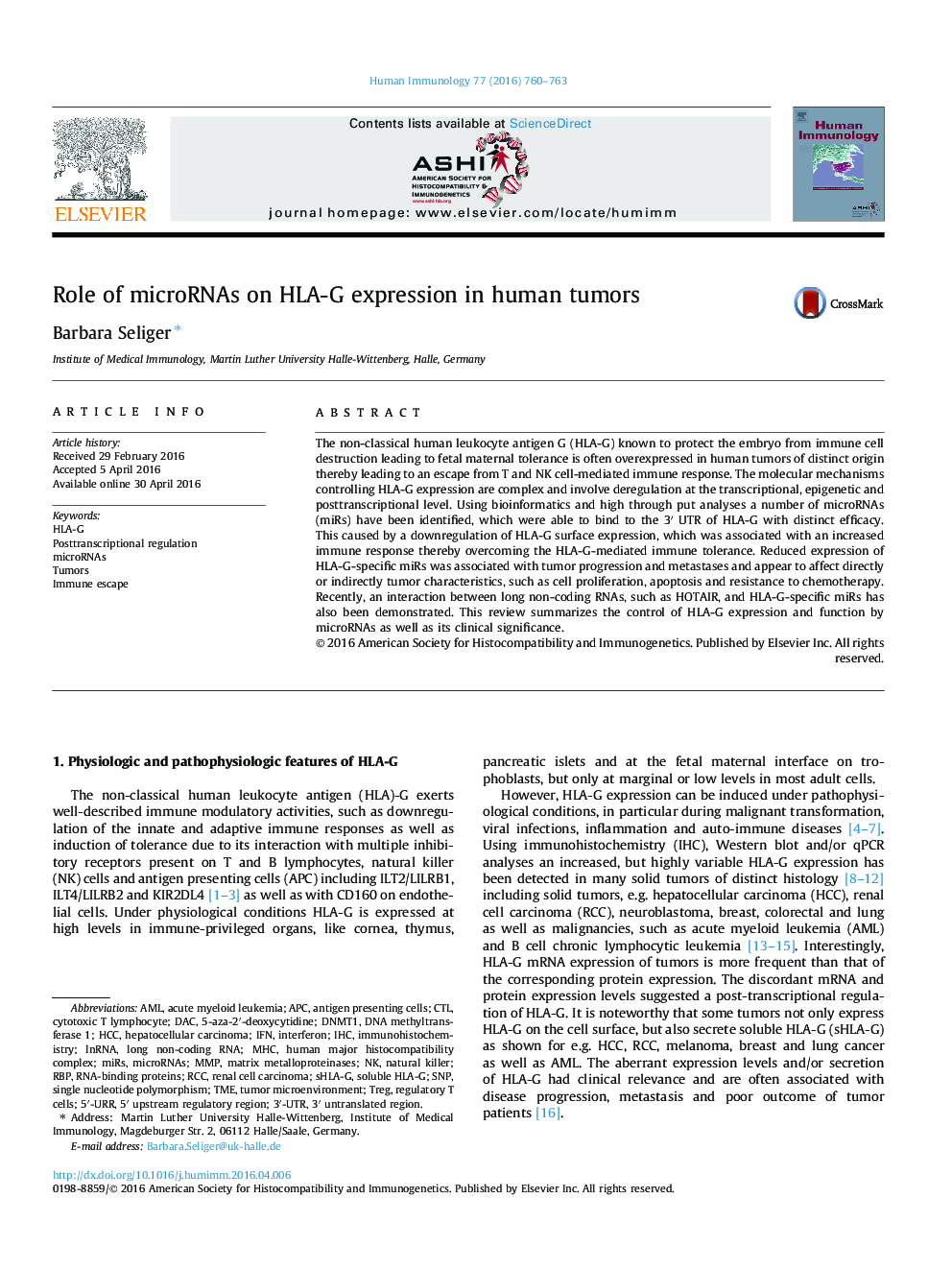| Article ID | Journal | Published Year | Pages | File Type |
|---|---|---|---|---|
| 3349479 | Human Immunology | 2016 | 4 Pages |
The non-classical human leukocyte antigen G (HLA-G) known to protect the embryo from immune cell destruction leading to fetal maternal tolerance is often overexpressed in human tumors of distinct origin thereby leading to an escape from T and NK cell-mediated immune response. The molecular mechanisms controlling HLA-G expression are complex and involve deregulation at the transcriptional, epigenetic and posttranscriptional level. Using bioinformatics and high through put analyses a number of microRNAs (miRs) have been identified, which were able to bind to the 3′ UTR of HLA-G with distinct efficacy. This caused by a downregulation of HLA-G surface expression, which was associated with an increased immune response thereby overcoming the HLA-G-mediated immune tolerance. Reduced expression of HLA-G-specific miRs was associated with tumor progression and metastases and appear to affect directly or indirectly tumor characteristics, such as cell proliferation, apoptosis and resistance to chemotherapy. Recently, an interaction between long non-coding RNAs, such as HOTAIR, and HLA-G-specific miRs has also been demonstrated. This review summarizes the control of HLA-G expression and function by microRNAs as well as its clinical significance.
